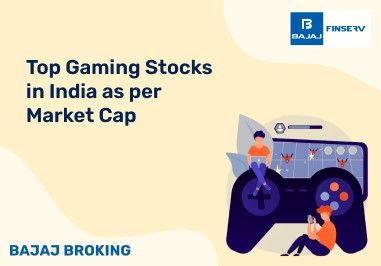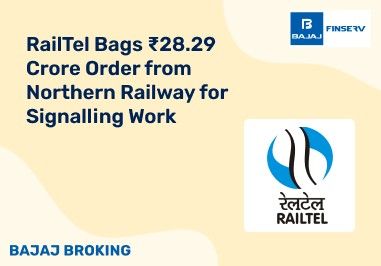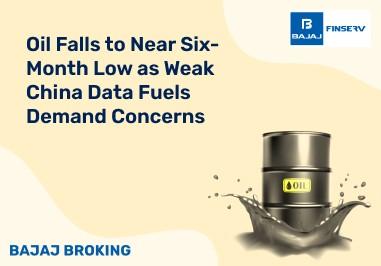What actually is an ETF?
A guide to ETF investing must begin by explaining what an ETF really is. An ETF is like a mutual fund (MF), with one important difference. The units of ETFs are traded on stock exchanges. However, the units of MFs are not traded on stock exchanges. So, if ETFs are traded on stock exchanges, what does it mean?
It means that you can trade in ETFs anytime during market hours. Hence, investing in ETFs offer a lot of liquidity, flexibility, and real-time pricing. On the other hand, MFs are traded only once a day when the market closes. That being said, ETFs are a kind of MF.
As in an MF, the money of investors is pooled into a fund in the case of an ETF. The money thus pooled is invested in several kinds of securities with the aim of meeting the defined investment objective.
Compared to MFs and stocks, ETFs are a relatively new option for investment. Hence, the awareness about them is lower than other asset classes. In India, the first ETF was launched only in 2002.
Additional Read: How to Open Demat Account for Minors?
ETFs vs. Stocks vs. Mutual Funds
If you are about to open a demat account, you must learn how ETFs compare with stocks and mutual funds as asset classes. The following table throws light on the differences between them.
Criteria
| Exchange-Traded Funds (ETFs)
| Stocks
| Mutual Funds (MFs)
|
Meaning
| An ETF is like an MF whose units are traded on stock exchanges.
| A stock is a security that denotes the ownership of a company. If you own a company’s stock, you own it to the extent of your stockholding.
| An MF is a fund where investors’ money is pooled together and then invested in various securities to meet the investment objective.
|
When a trade can happen
| You can trade in ETF units anytime during market hours.
| Stocks can also be traded anytime during market hours.
| Trades in MFs get executed only once a day when the market closes.
|
How these asset classes are managed
| A fund manager can manage an ETF either in an active or a passive manner. However, most ETFs are passive in nature, which means their performance is linked to the performance of a particular index.
| When a retail investor invests in a stock, he should actively manage it, which means he should track the price of the stock and also the performance of the company regularly.
| MFs can be actively or passively managed. That said, most MFs are actively managed, wherein their fund managers decide when to buy a security and when to sell it. However, they need to ensure that their actions are in sync with the investment objective.
|
Additional Read : Stocks vs. Mutual Funds vs. Gold
ETF Categories
A guide to ETF investing must talk about various categories of ETFs, which include Equity ETF, Debt ETF, Gold ETF, etc.
Equity ETF: Equity ETFs are typically passively managed, which means their fund manager keeps the composition of his fund in line with an index so that the fund mirrors the performance of an index or a designated sector. Hence, it is called a passive investment.
Gold ETFs: A gold ETF is a kind of ETF that mostly invests in gold bullion. Investing in a gold ETF can help you gain exposure to gold without investing in physical gold. Besides, since gold ETFs are traded on stock exchanges, you can buy or sell their units anytime during market hours.
ETFs with International Exposure: There are ETFs that mimic the stock indices of foreign countries. By investing in them, you can gain exposure to foreign markets. Hence, if you think that a certain foreign economy has growth potential, you can invest in an ETF that can help you gain exposure to it.
Debt ETFs: A debt ETF is usually a passively managed fund, which provides you with exposure to various debt securities, such as government bonds, corporate bonds, etc. Being passive in nature, debt ETFs track the performance of an index.
What are the Advantages of ETFs?
If you are keen to invest in the Indian stock market, you should consider ETFs because they offer the following advantages:
Diversification: As discussed earlier, ETFs usually mimic an index, which means that you can gain exposure to many securities by investing in an ETF. Hence, you can diversify your investments, which reduces the risk of your investments.
Flexibility and Ease of Trading: ETFs are traded on stock exchanges, just like shares are traded. Hence, you can buy or sell units of ETFs whenever you want during market hours, which provides you with a lot of flexibility.
Cheaper than MFs: ETFs are mostly cheaper in terms of costs than MFs. Most ETFs have lower expense ratios than actively managed MFs. This is because ETFs usually are passively managed. Hence, they require much lesser effort to manage than an actively managed MF.
Variety of options: For those keen to invest in ETFs, a lot of options are available. If they are keen on equities, they can invest in Equity ETFs. If they want to invest in gold, they can invest in Gold ETFs. For those keen to gain exposure to debt securities, Debt ETFs are available.
How to Select an ETF for Yourself?
ETF Category: The first thing that you need to decide is the category of ETF that you want to invest in. For example, you can invest in Equity ETFs, Debt ETFs, Gold ETFs, or ETFs with International Exposure. Each category has its own rewards and risks. Hence, you need to check whether investing in that category aligns with your risk tolerance and investment objective.
ETF Trading Volume: ETFs allow you to buy or sell their units anytime you want during market hours. However, if the trading volumes of an ETF are low, then you may not be able to trade in its units. Hence, you must check ETF trading volumes before investing in this asset class. Higher trading volumes usually mean better liquidity and narrower bid-ask spreads. However, lower trading volumes typically mean lower liquidity and wider bid-ask spreads.
Expense Ratio: While selecting an ETF, you must pay attention to its expense ratio, which is the annual fees you will have to pay for investing in it. You need to also compare the expense ratio of an ETF with other ETFs in its category. This will ensure that you will not end up paying a significantly high fee for investing in an ETF.
Tracking Error: You need to check how closely an ETF mirrors the performance of its benchmark index. When an ETF has a low tracking error, it shows that it closely follows its target index. However, a high tracking error means it is not able to mirror its target index. You should select an ETF that has a low tracking error so that it accurately represents an underlying index.
Key Takeaways
By now you have gone through a complete guide to ETF investing. You will agree that investing in ETFs offers several advantages. For example, you can diversify your investment and you can buy or sell ETF units anytime during market hours. Besides, most ETFs are cheaper in terms of costs than MFs. While the benefits are there, you should invest only in those ETFs that align closely with your investment objective. For example, if you want to invest in equities, you can invest in Equities ETF. In case, you are keen on debt securities, you should invest in Debt ETFs. While ETFs are mostly passively managed, you must track your ETF investments regularly so that corrective action can be taken, if needed.
Disclaimer: Investments in the securities market are subject to market risk, read all related documents carefully before investing.
This content is for educational purposes only. Securities quoted are exemplary and not recommendatory.
For All Disclaimers Click Here: https://bit.ly/3Tcsfuc














